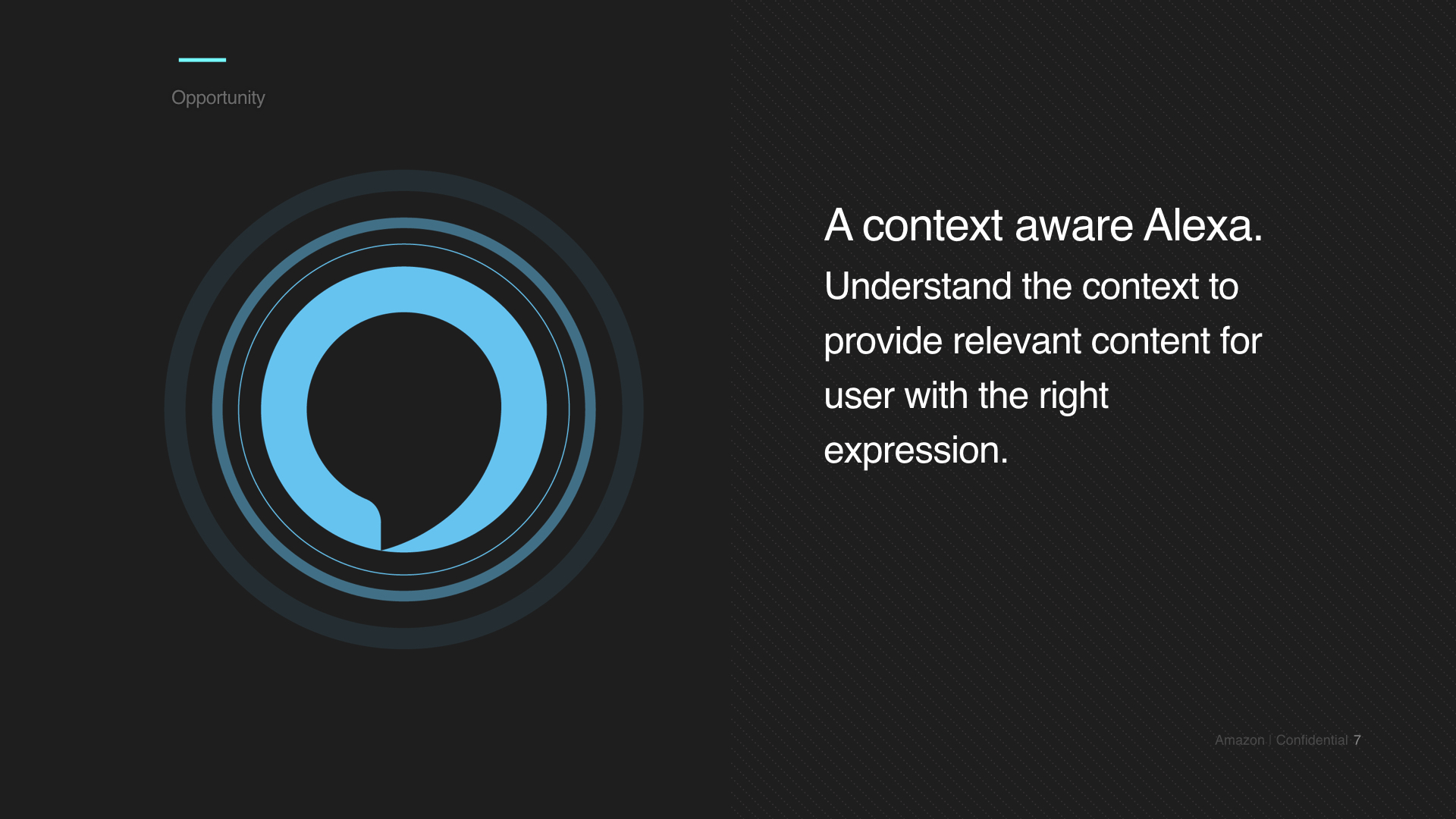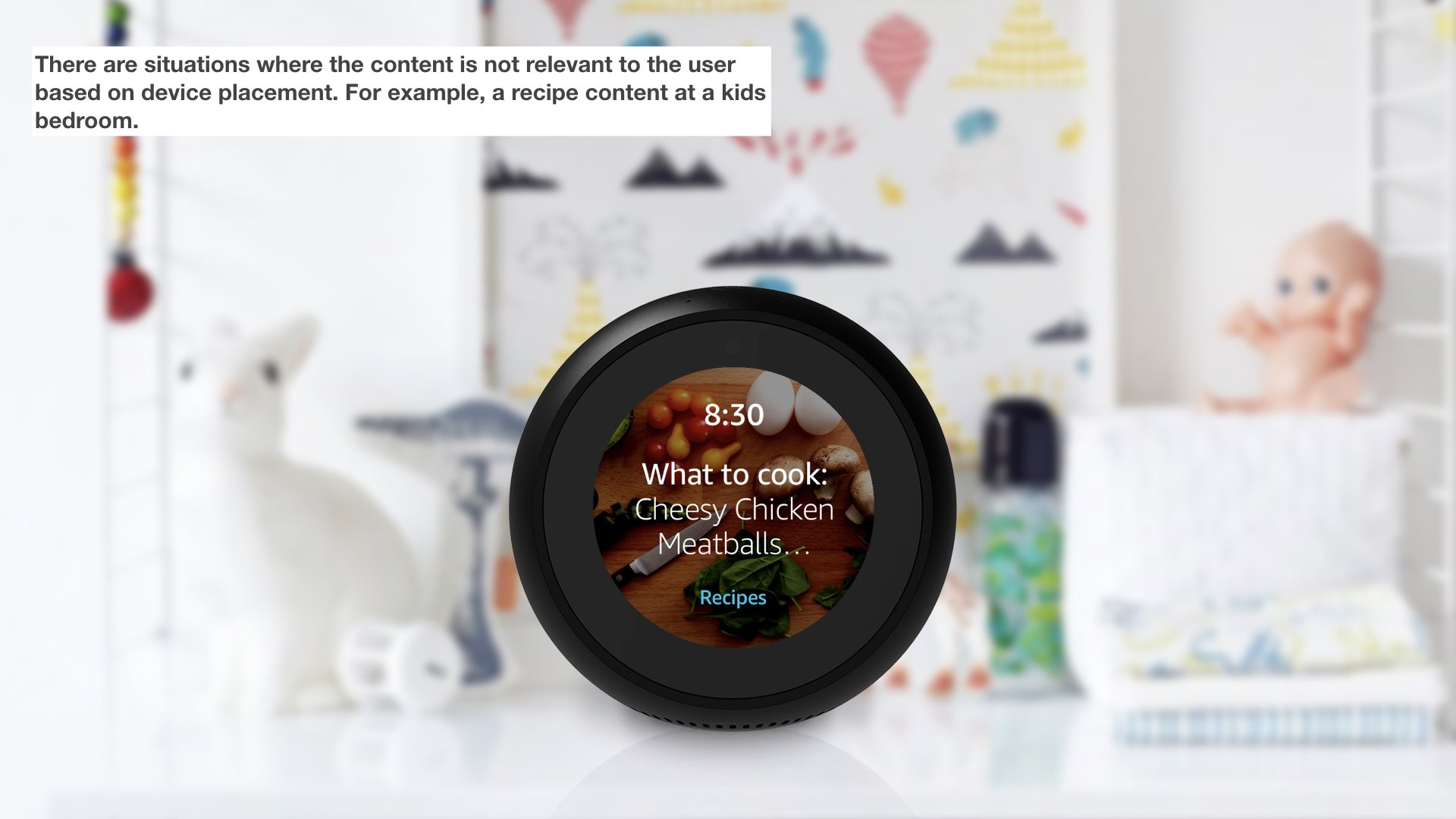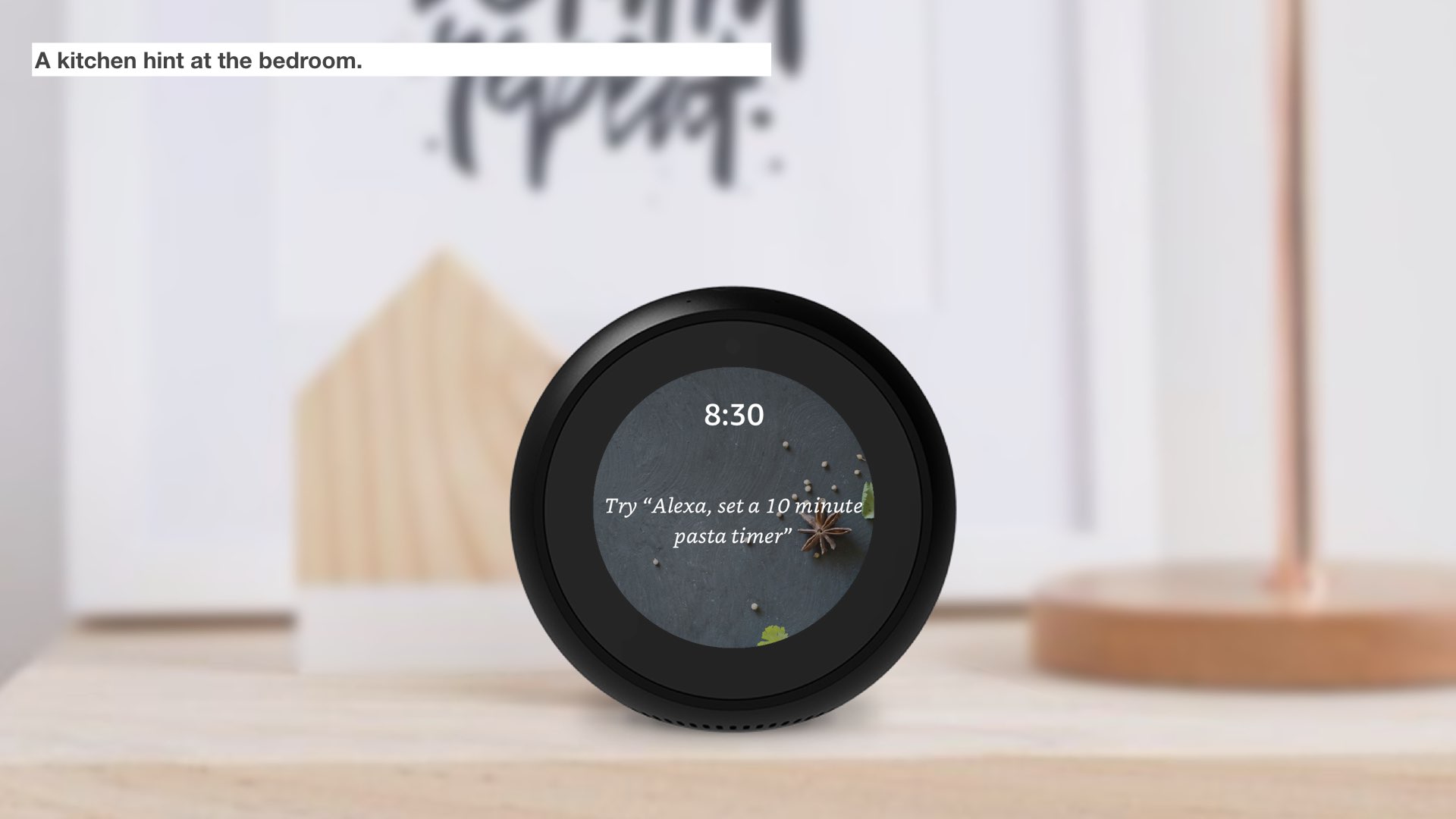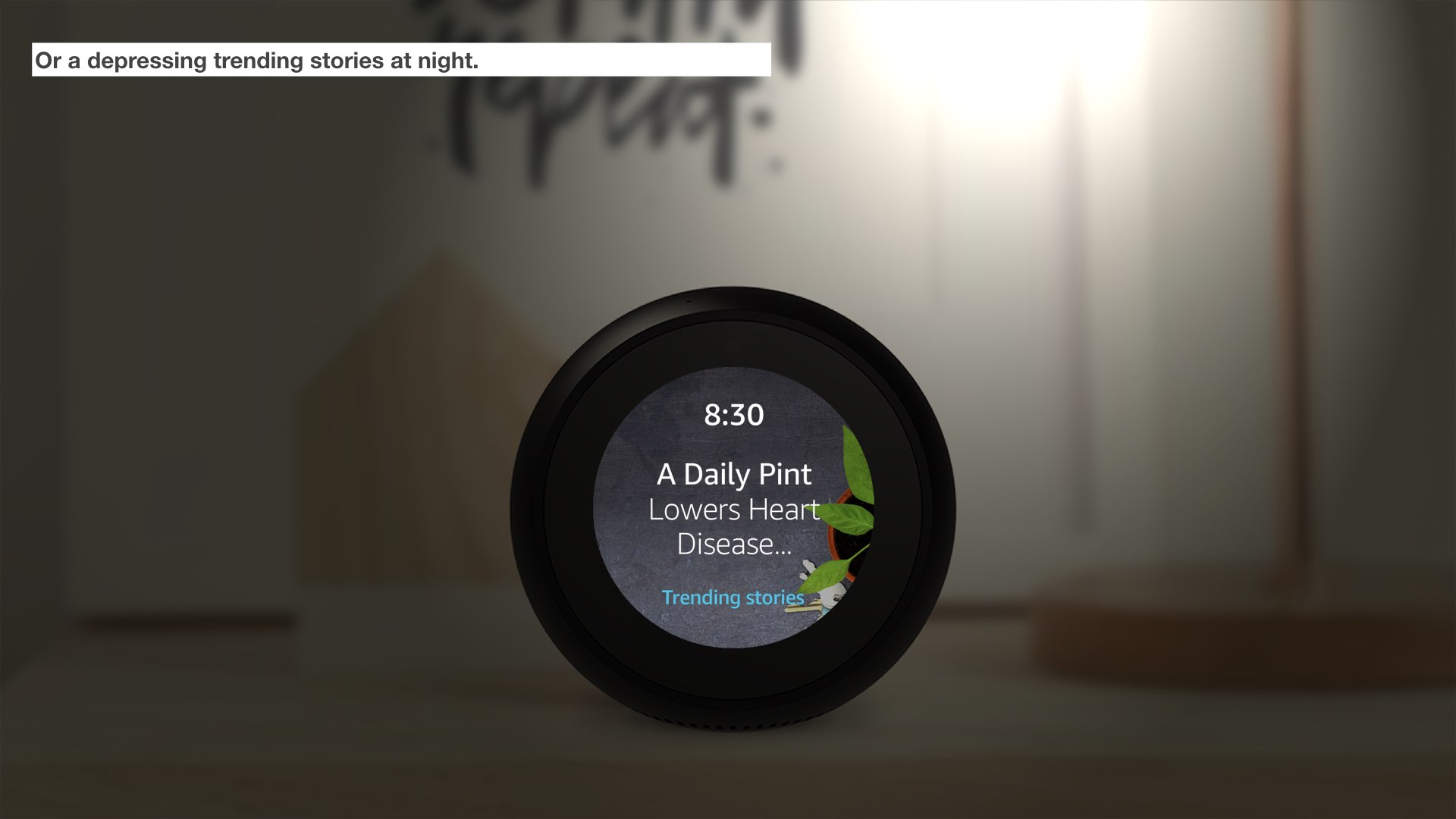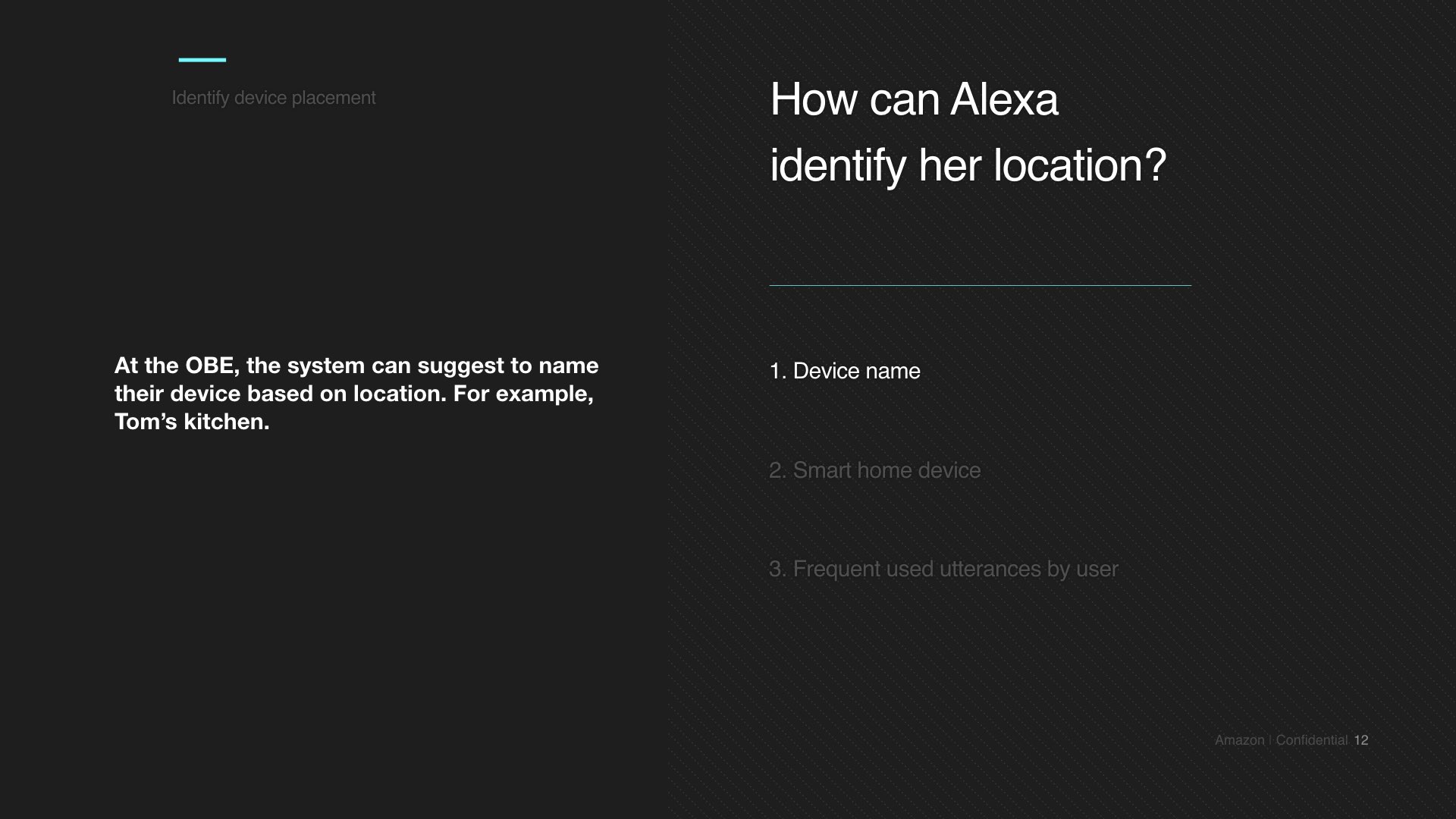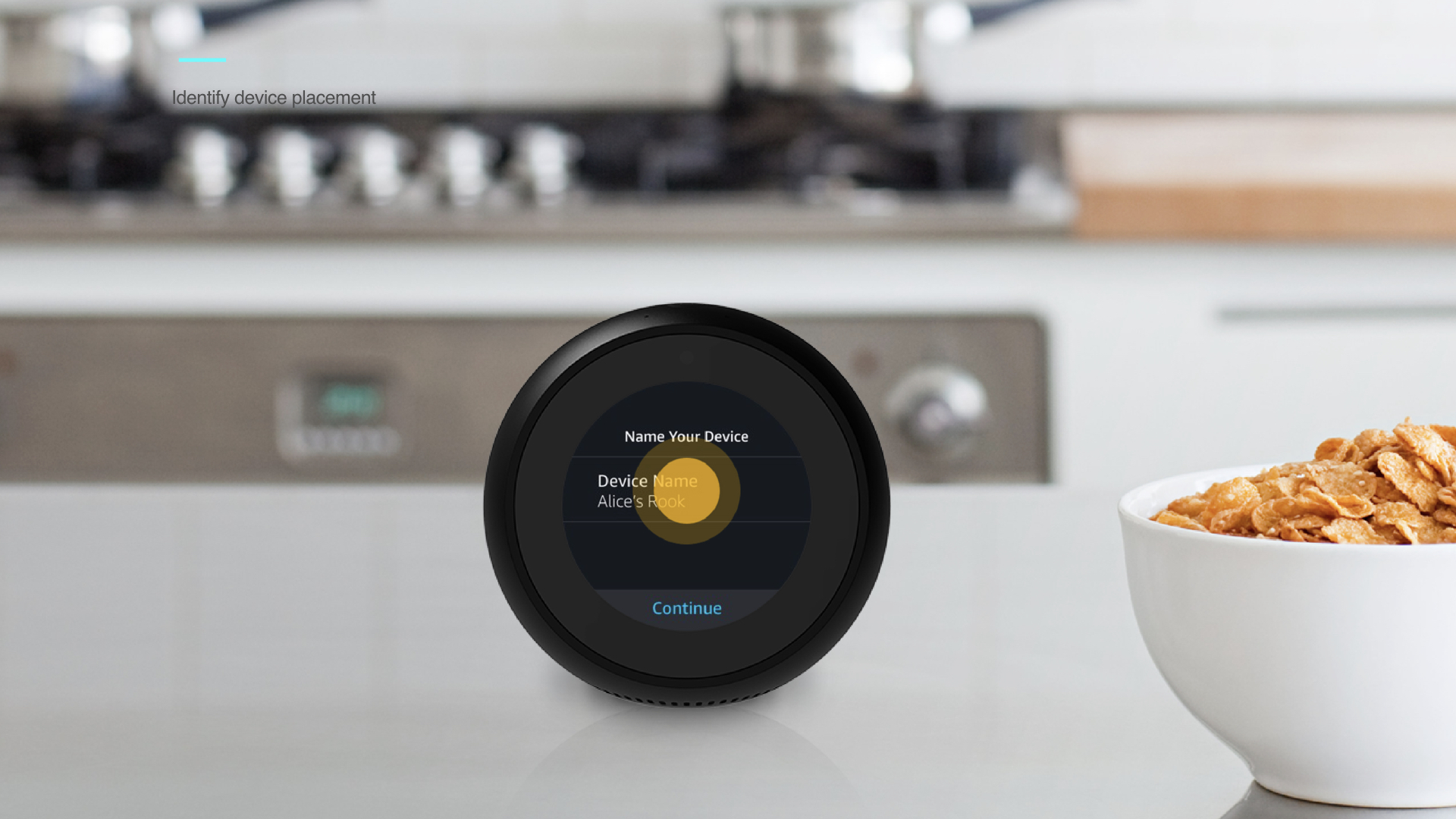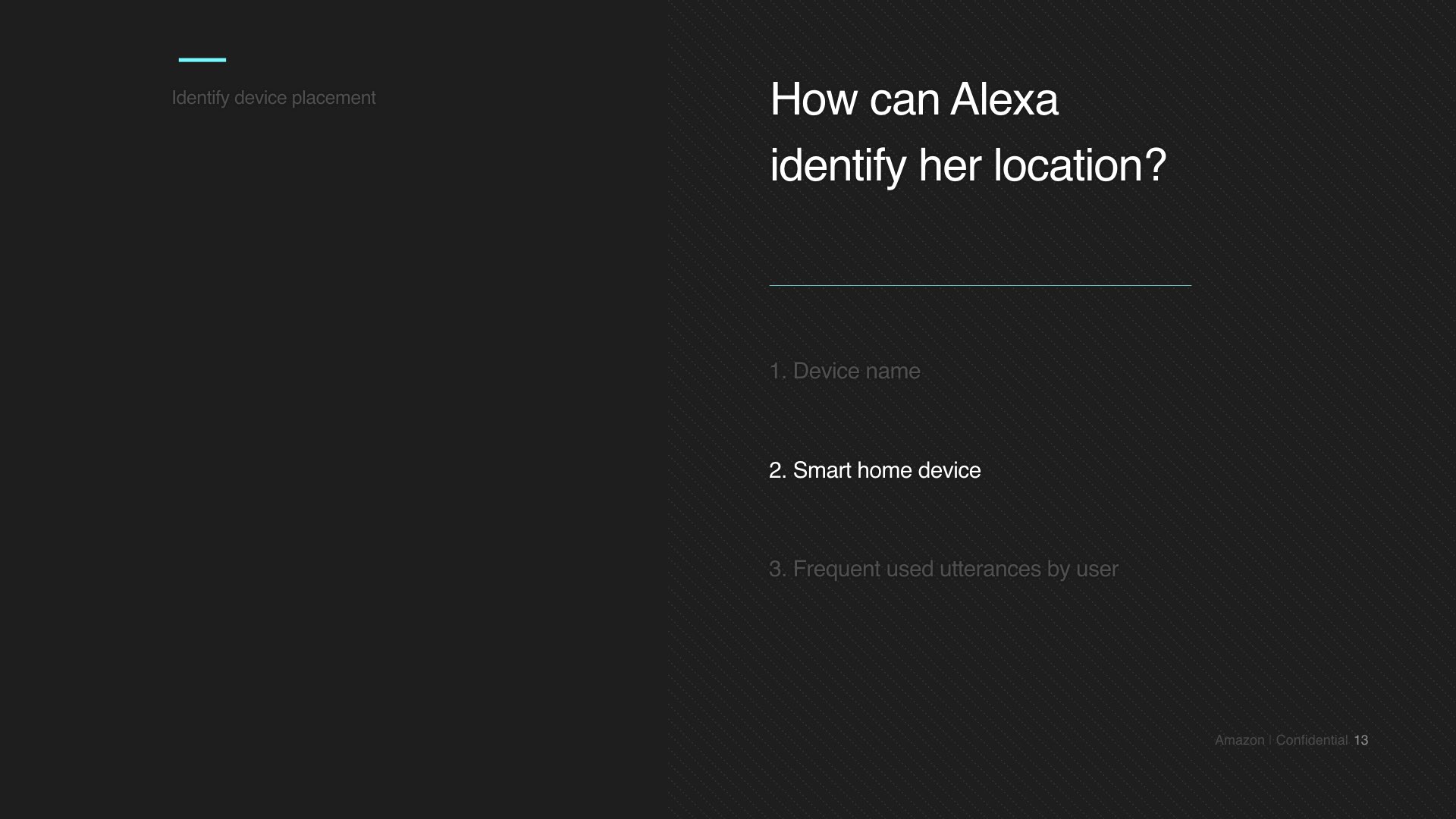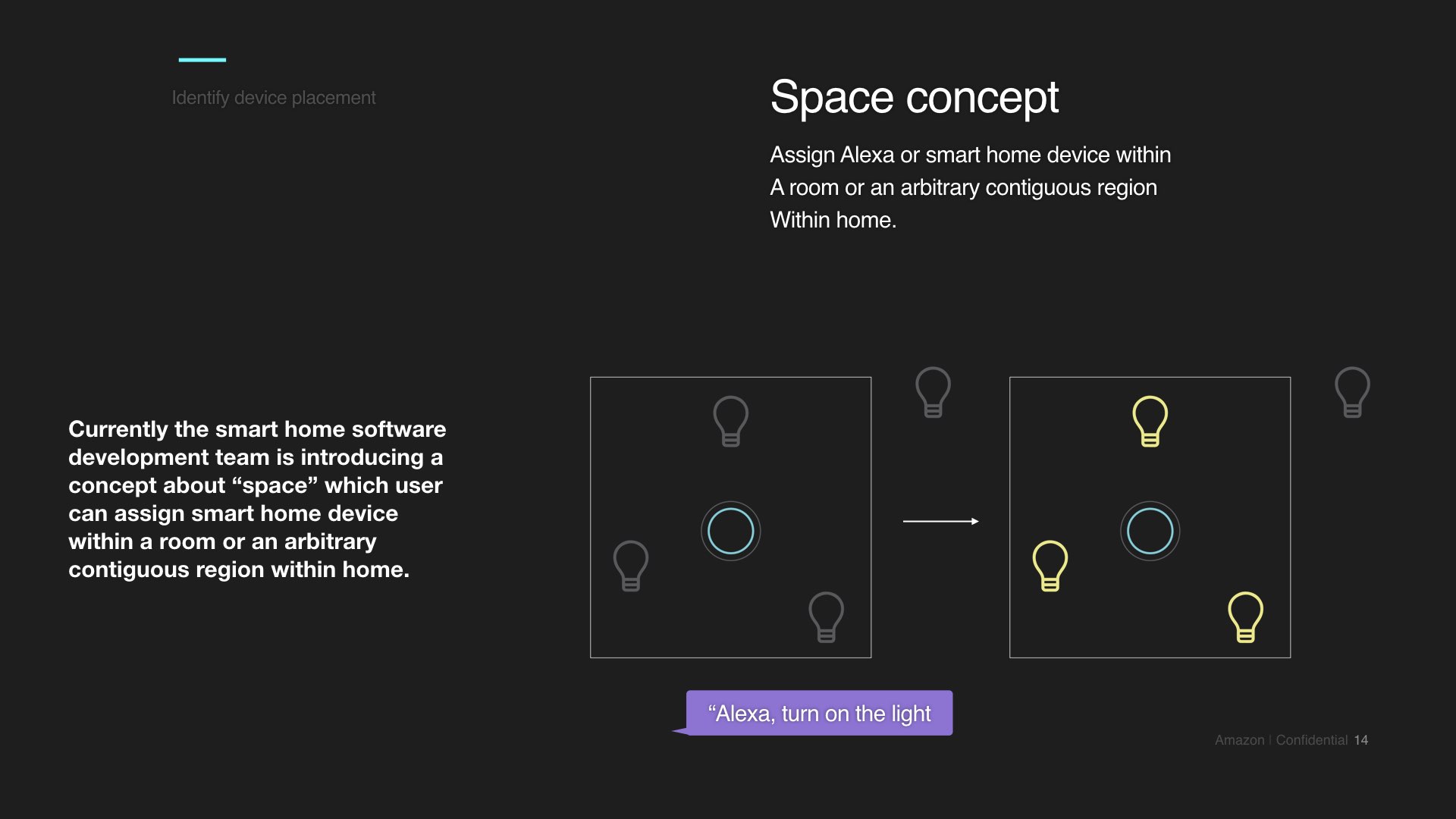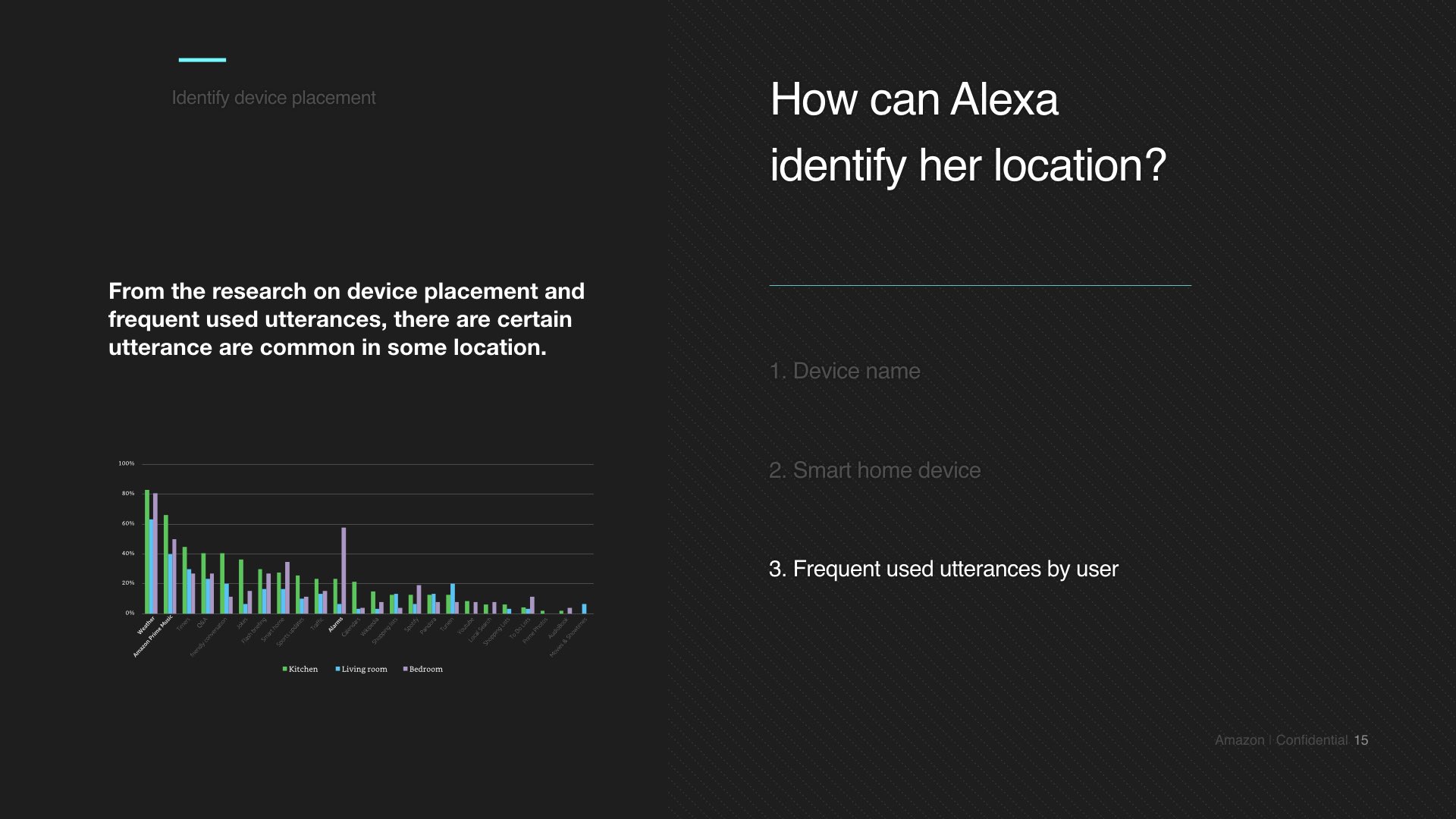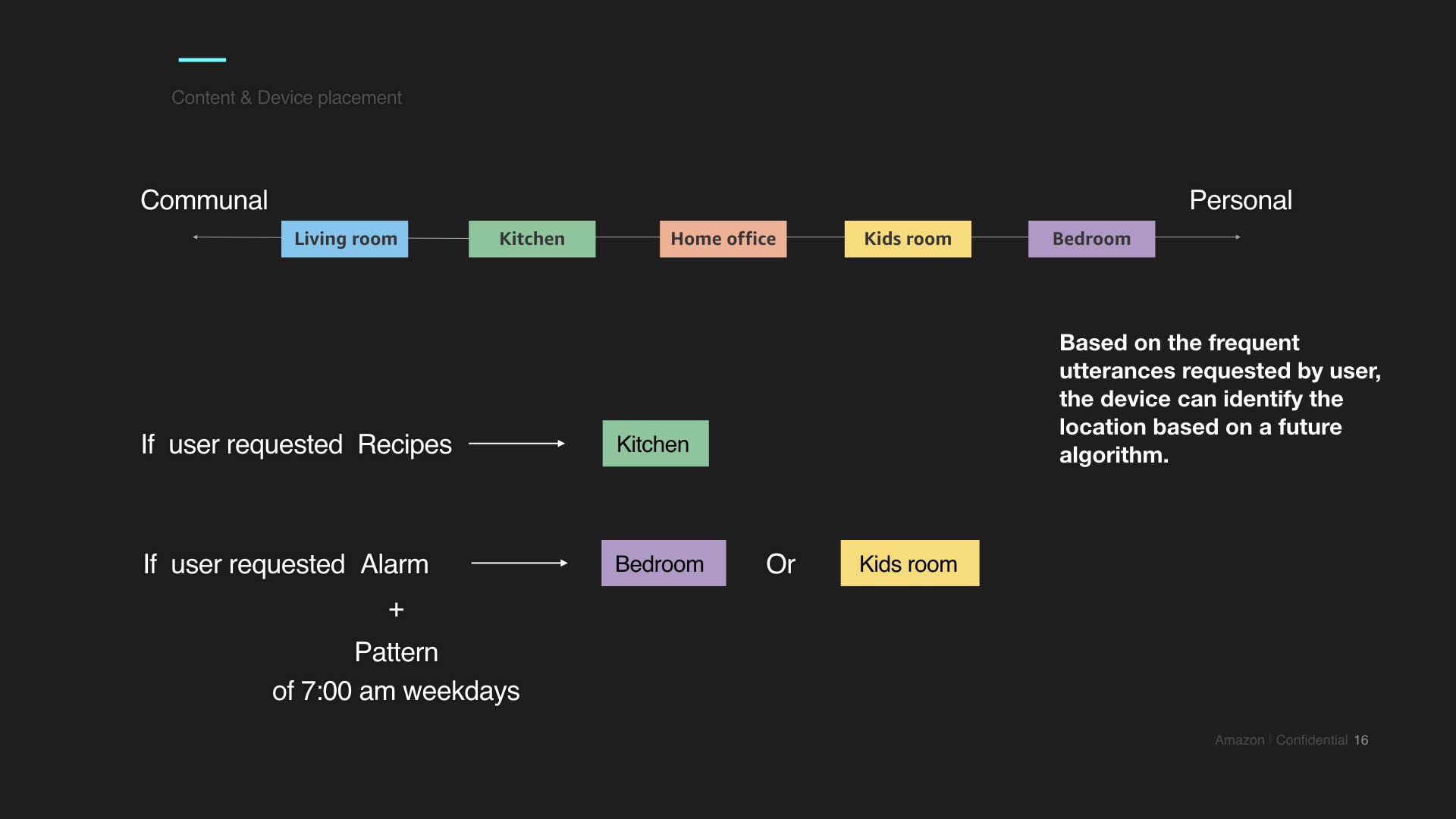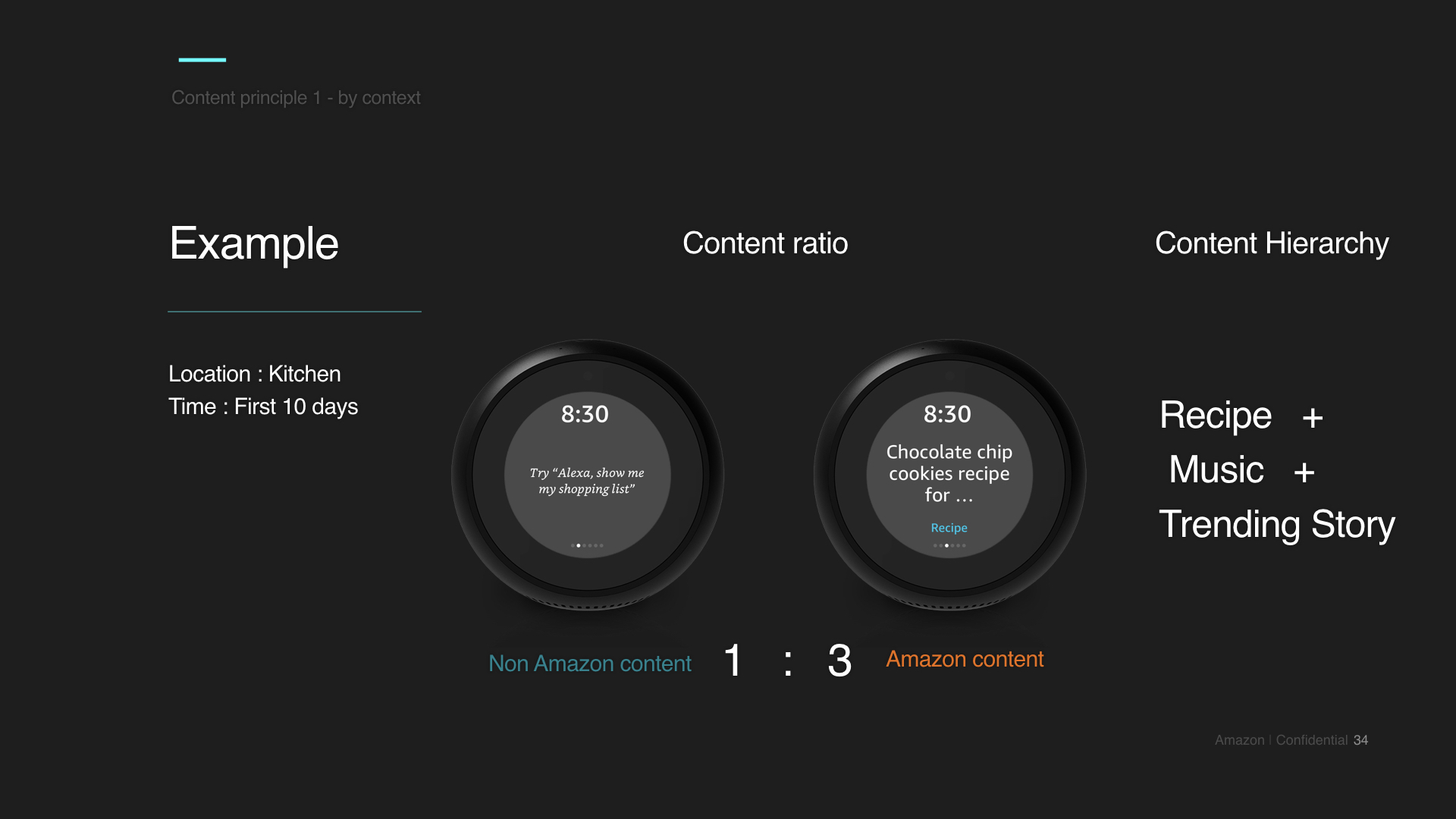Project overview
Future of Echo Spot home experience
This is a 3 months long project I worked as an UX design intern at Amazon. The nature of this project focuses on speculation, defining high level principles and storytelling of the experience.
I was given the brief of imagining the future of home experience for Echo Spot. I collaborated with interaction designers, visual designer and researcher to brainstorm on the idea.
The design brief
Future of Alexa content experience
Provide a vision in the future of Echo Spot home experience in creating a better content experience with use cases.
research & explore
1. Find design opportunity - Device Placement
From previous research on other Alexa devices, I have found that there is a relation between device placement and the most frequent utterance by user.
This is a chart showing the relationship between device placement and the % of domain requested by the user. From the chart, "weather", "alarms" and "Smart home" have the highest percentage of requests for the bedroom device.
There is an opportunity in providing a better content experience if Alexa could understand the location.
2. Only one home experience across devices
Currently, there is only one home experience are using across all devices. For Echo Spot, since it has a different form factor as Echo Show, users are more likely to put in personal places like a bedroom or office desks. Hence, there is an opportunity to design a new experience with the right product approach.
Problems scenarios
Scenarios to show irrelevant content with the context (location, time).
The concept
Context-Aware Alexa Concept
How can Alexa identify her location?
3 Principles for better content experience
1st Principle - Relevant Content
1. Personalization
The device learned the user's pattern over time and change the content hierarchy of Amazon & Non-Amazon content ratio accordingly.
For example, the initial default content hierarchy in the Kitchen is Recipe + Music + Trending Story. Let's say the user requested Local Search very often, the device will learn and show more content related to Local Search.
2. Customization
Some content allows users to customize the content-type based on their personal preference.
For example, users can change recipe content to vegetarian recipe content upon requests.
2nd Principle - Contextual Response
This diagram shows that there are different stages of Alexa depends on different time. Each stage has a different respond curve which shown in the graph.
2nd Principle - Scenario example
Task-oriented response
Alexa understands the context of the bedroom and midnight, so she responds with dim screen mode after request instead of back to active mode.
3rd Principle - Unobtrusive
3rd Principle - Scenario example
Ambient mode
Focusing on the transition of content with visuals and providing a more ambient, subtle way of showing content. Allowing the user to focus at the moment instead of distracting the user.
Summary
The project aimed to provide a fresh perspective on the home experience by speculating the future use cases. At the same time, the research team was beginning to research the relationship between device placement and user frequent utterances. This project had provided great insight for the team to develop the research hypothesis.

